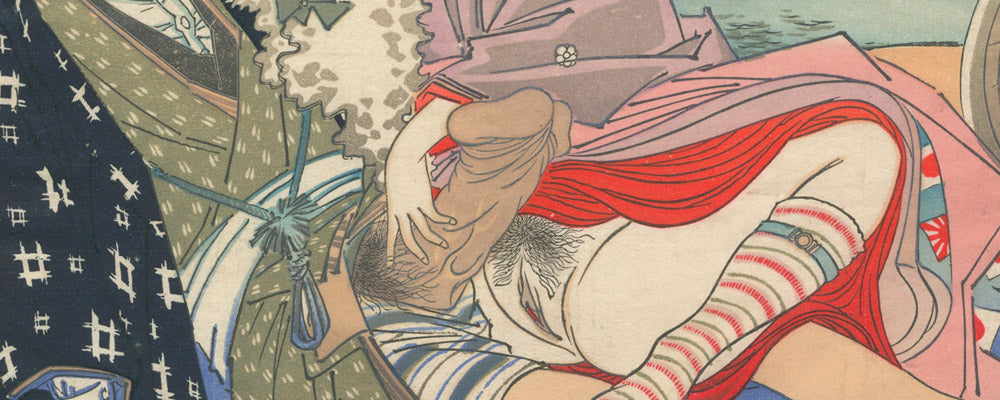
Ofer Shagan: The “Shagan Collection” collected and owned by Mr. Ofer Shagan
Share
Ofer Shagan, a businessman, has been living in Japan since 1989. His passion for art and antiques has led him to travel across Asia acquiring magnificent art objects. Ofer also writes books, mostly in Japanese, on various aspects of his collection and organizes exhibitions at major Japanese museums.
Soon after arriving in Japan, Mr Shagan began collecting shunga , a Japanese art form that is unique among the world’s traditional art in dealing with erotic topics outside of a religious context. Shunga differs as well by depicting erotic topics not for the purpose of stimulating sexual desire in the viewer. Rather, the artists use eroticism as a tool to express positive social values, for humor and parody, to protest, to communicate gossip, etc.
The “Shagan Collection” is considered to be, by very far, the world’s largest known collection of shunga. The collection now comprises over 10,000 items, including about 6,000 individual ukiyo-e prints (including koban, chuban and oban sizes) over 3,000 Edo-era books, and over 300 hand-painted scrolls.
Mr Shagan’s guiding concept, besides collecting classic works made by well-known artists such as Moronobu, Sukenobu, Settei, Hokusai, Utamaro, Shuncho, Kunisada, Kuniyoshi and Kyosai , has been to locate items with important social messages, as he believe that we can never fully understand Japanese history and culture without understanding shunga’s hidden messages. In this quest, he has acquired many shunga items not yet given attention by art critics and historians, in many cases the artists being unknown.
Besides building the collection, Mr Shagan is very active in studying it systematically, cooperating with the world top researchers on the topic, as well as presenting the collection to the public. He has written several books on shunga (published by major publishers in Japanese, English and French) and has organized exhibitions of his shunga collection. His articles, and interviews with him, appear regularly in popular magazines, newspapers and art periodical inside and outside Japan.
What makes exhibitions of the “Shagan Collection” so unique? Aside from mere greatness in number of items, they are divided not by the artists who made them, but by their themes and functions. In this way the viewers gain the opportunity not merely to see many of the world’s most beautiful and interesting shunga, but to gain an understanding – the chance for a deeper knowledge – of Japanese culture and the periods when the works were made, as well as a better understanding the messages intended by the artists. Not only do these messages help us understand the particular works, but they can broaden our understanding of similar topics in our own day, give us fresh perspectives, stimulate our creativity today. Needless to say, this provides invaluable opportunities for contemporary artists seeking to deal with erotic themes.
The Shagan Collection is still growing by the day and Mr Shagan wishes to share the collection, and particularly his most interesting finds, with the world. Researchers of Shunga, publishers and museums wishing exhibit the collection are welcome to contact Mr Shagan through his website at: https://shungacollection.com.
If you want to learn more about collector Ofer Shagen, please check out his Facebook page at https://www.facebook.com/profile.php?id=100013347456292
Favorite Prints

A young couple makes love secretly in a room, the guy looks back attentively so they do not get caught. The lack of freedom of choice of the girl is hinted at by the description of the bird in the cage.

A group of men "teaching a virgin" in sex secrets. Around them a lot of used and new tissue paper and in the background sex toys.

Love on the beach. Many Western influences appear in this print. Bicycles, in the background foreign ships, and especially the mixed hair and dress style. Please notice the Japanese flag on the girl's inner kimono.